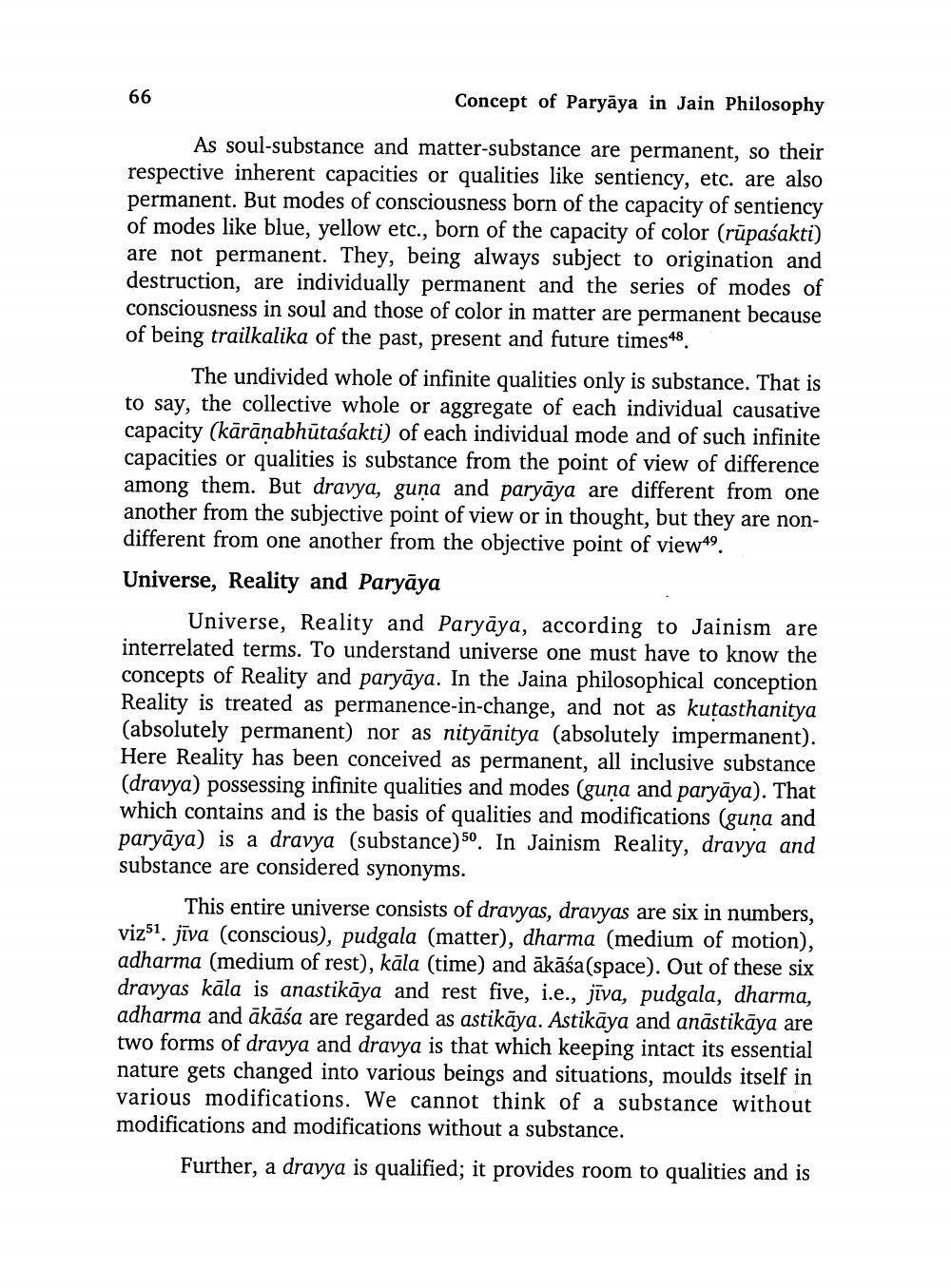________________ 66 Concept of Paryaya in Jain Philosophy As soul-substance and matter-substance are permanent, so their respective inherent capacities or qualities like sentiency, etc. are also permanent. But modes of consciousness born of the capacity of sentiency of modes like blue, yellow etc., born of the capacity of color (rupasakti) are not permanent. They, being always subject to origination and destruction, are individually permanent and the series of modes of consciousness in soul and those of color in matter are permanent because of being trailkalika of the past, present and future times48. The undivided whole of infinite qualities only is substance. That is to say, the collective whole or aggregate of each individual causative capacity (karanabhutasakti) of each individual mode and of such infinite capacities or qualities is substance from the point of view of difference among them. But dravya, guna and paryaya are different from one another from the subjective point of view or in thought, but they are nondifferent from one another from the objective point of view49. Universe, Reality and Paryaya Universe, Reality and Paryaya, according to Jainism are interrelated terms. To understand universe one must have to know the concepts of Reality and paryaya. In the Jaina philosophical conception Reality is treated as permanence-in-change, and not as kutasthanitya (absolutely permanent) nor as nityanitya (absolutely impermanent). Here Reality has been conceived as permanent, all inclusive substance (dravya) possessing infinite qualities and modes (guna and paryaya). That which contains and is the basis of qualities and modifications (guna and paryaya) is a dravya (substance)50. In Jainism Reality, dravya and substance are considered synonyms. This entire universe consists of dravyas, dravyas are six in numbers, viz51. jiva (conscious), pudgala (matter), dharma (medium of motion), adharma (medium of rest), kala (time) and akasa(space). Out of these six dravyas kala is anastikaya and rest five, i.e., jiva, pudgala, dharma, adharma and akasa are regarded as astikaya. Astikaya and anastikaya are two forms of dravya and dravya is that which keeping intact its essential nature gets changed into various beings and situations, moulds itself in various modifications. We cannot think of a substance without modifications and modifications without a substance. Further, a dravya is qualified; it provides room to qualities and is




